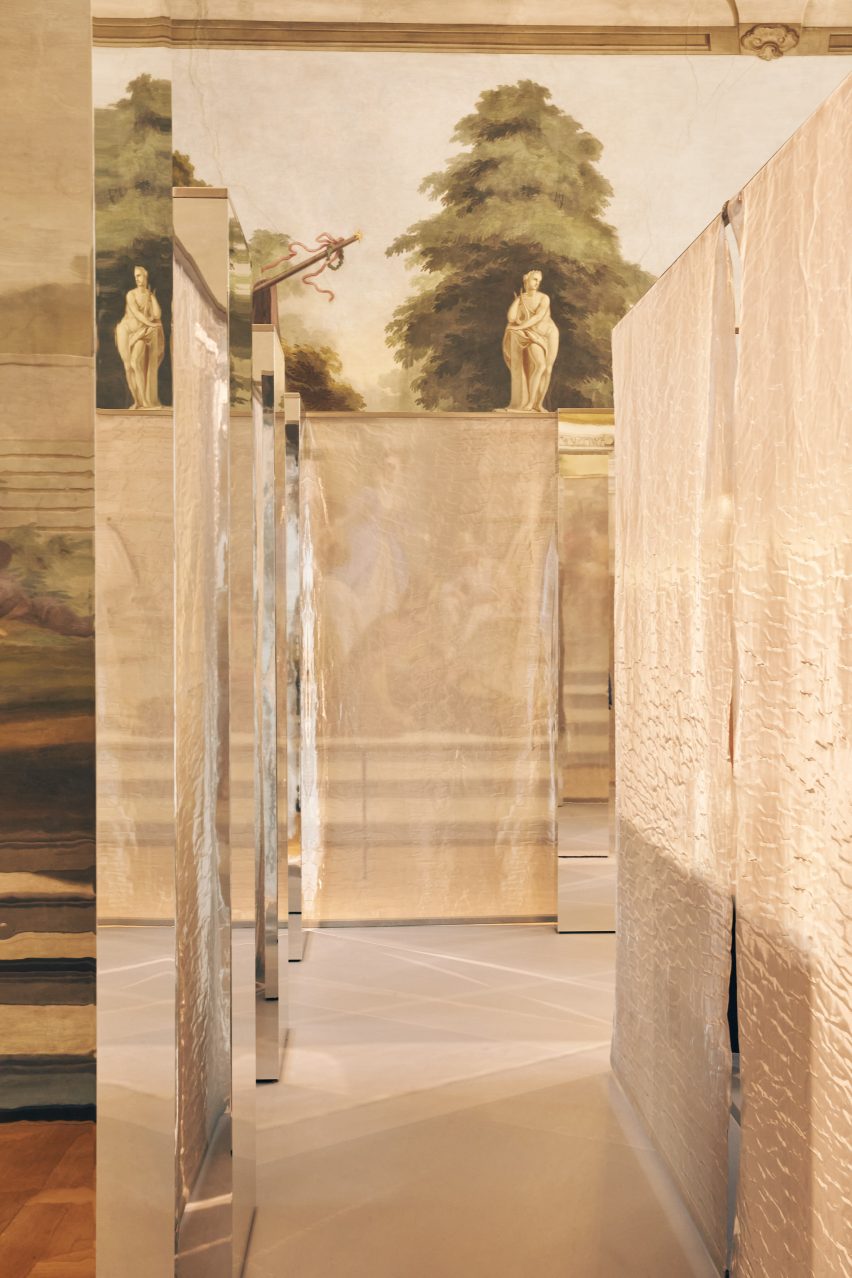
COS reflects 18th-century frescoes in Bolzano store with mirrors and mesh
Fashion brand COS added an installation of mirrored plinths and display stands draped in layers of transparent mesh to enhance and contrast the interiors of the historic Palazzo Menz in Bolzano, Italy.
COS's in-house design team inserted the site-specific installation to showcase the brand's latest collection in the opulent ballroom of the palazzo, which was built in 1670.

Decorated with a duo of rococo-style frescos called Triumph of Love and Masked Party by Austrian painter Johann Josef Karl Henrici, the space had been used by COS as a viewing room since it took over the over the palazzo in 2019.
It now hosts an immersive, "shoppable experience" that was designed to homage both its immediate context at the Palazzo Menz as well as Bolzano's location on the Austrian border.

"The installation takes inspiration from the breathtaking setting of the surrounding town – from the peaks of the Dolomites disappearing into a sea of clouds to a beautiful public square in the heart of the Bolzano – using materials to enrich and reflect the works of art," said COS.
"As visitors move through the installation, they are taken on a journey through the history of the Palazzo, with the structure being entirely mirrored to reflect fragments of the surrounding frescos, and the open top of the installation allowing for the ceiling fresco to emerge overhead."
The main ballroom, adorned with layers of transparent mesh and reflective surfaces, is intended to recreate the feeling of being immersed in the clouds.
A smaller side room houses organically shaped display tables that were hand-crafted by local stone suppliers Südtirol Stein. The forms are inspired by the contours of the mountains that surround Bolzano.

Renowned for collaborating with creatives to create installations and fashion collections, COS has previously installed a pavilion designed by French architect Arthur Mamou-Mani in the courtyard of a 16th-century palazzo in Milan.
Made up of 700 bioplastic bricks, that were 3D-printed in a mixture of wood and polylactic acid (PLA).
Photography is by Stefan Giftthaler.